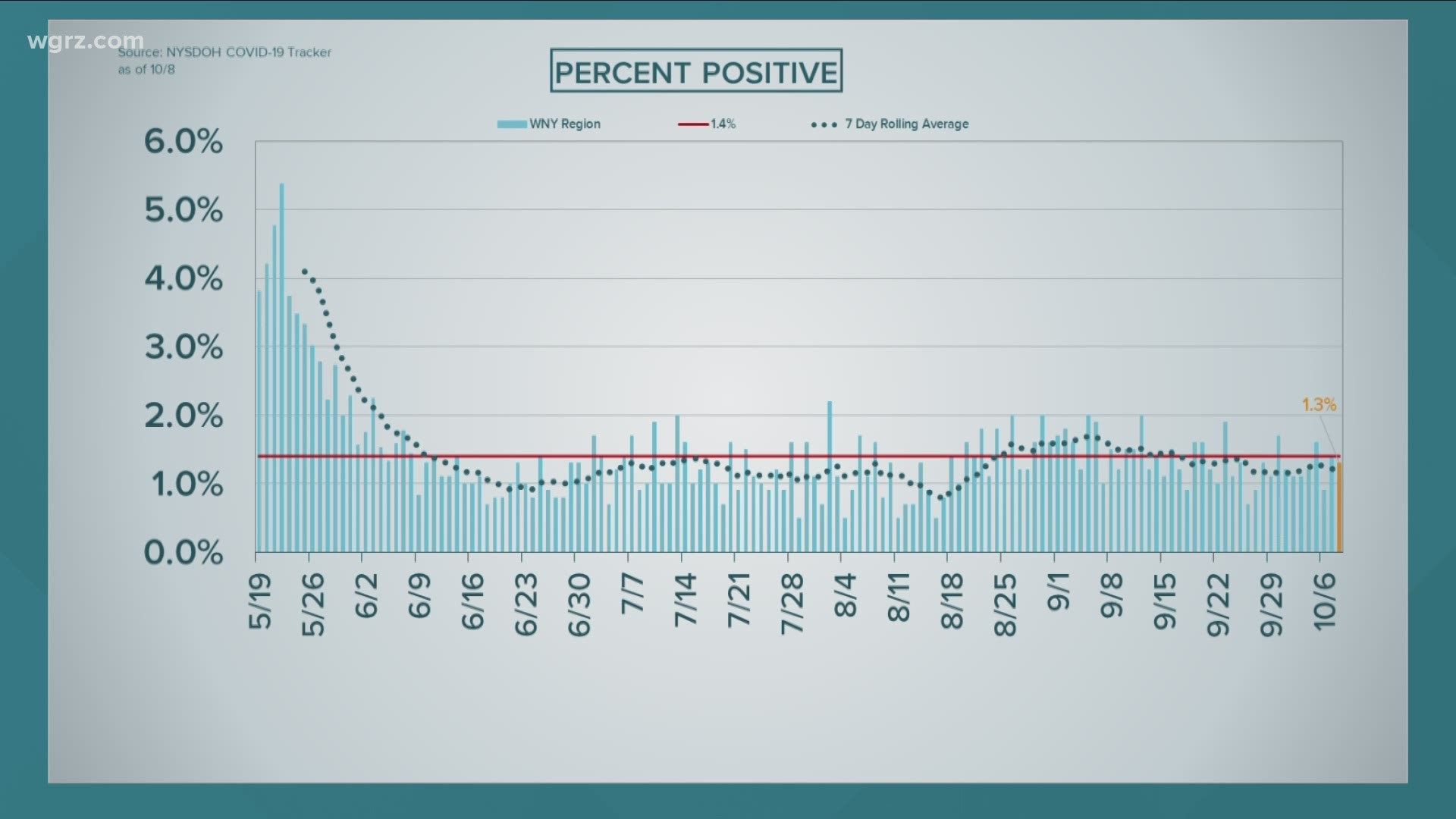ALBANY, N.Y. — New York Governor Andrew Cuomo provided an update into the state's progress on the COVID-19 pandemic Friday morning.
The state conducted 139,000 tests on Thursday. Of the tests completed, 1.1% of those tests were positive for COVID-19. Six New York residents died Thursday of COVID-19 related illness.
Cuomo says the Western New York Region is at 1.3% positive rate for Thursday. He says that is not good and had also said during his briefing on Thursday that the Western New York region needs to do better.
The Western New York region consists of Erie, Niagara, Chautauqua, Cattaraugus and Allegany counties.
Erie County has recorded seven COVID-19 related deaths in the past two weeks, and its COVID-19 positive rate for Thursday was 1.5% out of 4,081 tests reported.
Niagara County issued their update on Friday. They had 20 positive cases out of 1,448 tests.
“The 20 positive test we have today are the most we’ve had in two months. However, 1,448 tests were also completed, which is the third most ever for us,” said Niagara County Public Health Director Daniel J. Stapleton. “Our infection rate remains just above one percent, right where it has been now for several months. We need to continue to be vigilant and follow all protocols but at this time the trend lines continue to be very good.”
Chautauqua County had 15 positive COVID-19 cases out of 695 tests. That is 2.2% positive rate.
Cattaraugus County tested 413 residents with 11 of those tests COVID-19 positive, or 2.7%.
Allegany County tested 309 people, with one test coming back positive for a .3% positive rate.
Human coronaviruses are usually spread through...
• The air by coughing or sneezing
• Close personal contact, such as touching or shaking hands
• Touching an object or surface with the virus on it, then touching your mouth, nose or eyes before washing your hands.
Help stop the spread of coronavirus
• Stay home when you are sick.
• Eat and sleep separately from your family members
• Use different utensils and dishes
• Cover your cough or sneeze with your arm, hot your hand.
• If you use a tissue, throw it in the trash.
Lower your risk
• Wash your hands often with soap and water for at least 20 seconds. If soap and water are not available, use an alcohol-based hand sanitizer.
• Avoid touching your eyes, nose, and mouth with unwashed hands.
• Avoid close contact with people who are sick.
• Clean and disinfect frequently touched objects and surfaces.
• If you are 60 or over and have an underlying health condition such as cardiovascular disease, diabetes or respiratory illnesses like asthma or COPD, the World Health Organization advises you to try to avoid crowds or places where you might interact with people who are sick.

